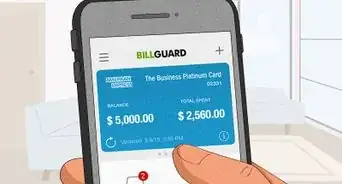This article was co-authored by Amber Rosenberg, PCC. Amber Rosenberg is a Professional Life Coach, Career Coach, and Executive Coach based in the San Francisco Bay Area. As the owner of Pacific Life Coach, she has 20+ years of coaching experience and a background in corporations, tech companies, and nonprofits. Amber trained with the Coaches Training Institute and is a member of the International Coaching Federation (ICF).
There are 15 references cited in this article, which can be found at the bottom of the page.
This article has been viewed 28,314 times.
Millennials, generally defined as people born between 1980 and 1996, are currently the largest generation in the American workforce.[1] As managers and business owners everywhere have probably realized, millennials tend to have some particular views towards work that clash with older generations. This leads some employers to think millennials are lazy, but that’s not true. They can be excellent employees and hard workers, but you might have to adjust your approach a bit to get the most benefit. With a bit of extra effort, you can design the ideal practices to manage your millennial employees.
Steps
Building a Millennial-Friendly Work Environment
-
1Offer flex or remote work options. In general, millennials prefer more flexibility from their jobs, and most state that they would prefer remote-work options at least part of the time.[2] In many workplaces, this is definitely a possibility, so try to make it part of your management approach. Offering remote opportunities can attract more people to your workplace, and motivate the ones that are already there to work harder.[3]
- Many studies increasingly show that remote work results in higher productivity, so it might be a benefit to your company overall to offer more remote options.[4]
- If you can’t offer remote work, try to offer more flex time options. For example, rather than running on a 9-5 schedule, consider offering later or earlier starts for employees who work better on a different schedule.
- Of course, this isn’t possible for all jobs. Security guards, engineers, and other hands-on professionals generally have to be in the workplace to do their jobs.
-
2Encourage employees to use technology and social media at work. Millennials, especially younger ones, are the first generation that grew up with the internet and other new technologies, and it’s a big part of their lives.[5] They may be checking their phones or Tweeting occasionally at work. This isn’t a problem unless they aren’t getting their work done, so it’s fine to encourage technology use in the office.
- Try to understand that just because someone is checking their phone, it doesn’t mean they aren’t listening to you. Millennials are used to multitasking with technology, so you only have to address it if they’re clearly not paying attention or are being rude.[6]
- One creative way to take advantage of millennials’ tech skills is to let them teach some older employees about new programs, apps, or social media sites. This not only taps into their skills, but helps them take on more leadership and active tasks at work so they feel more connected to the workplace.
Advertisement -
3Build a cooperative and collaborative workplace. While you might think that no one likes group projects, millennials do tend to thrive in a cooperative environment. Try to design group tasks and let employees work together on their assignments. You’ll probably be very happy with the results, and your employees will feel more connected to the workplace.[7]
- You could also have daily or weekly brainstorming sessions to get everyone involved in the work process.
- Millennials also enjoy a strong company culture outside of work.[8] You can tap into this by sponsoring work events, or encouraging employees to socialize after work.
-
4Try to provide perks for employees. Besides competitive pay and a good work environment, millennials also enjoy workplace perks, and many businesses are taking notice. Occasionally ordering lunch, building a rec room, or updating the office technology can boost morale and make millennials feel more at home.[9]
- Your business might not have a lot of money to spare for outside activities, but if you can sponsor a simple, monthly event, that can make a big difference on the company culture.
- If you can’t think of any additional perks you could offer, then a holiday bonus is always a good choice. No one will be mad about getting more money!
Motivating Millennial Employees
-
1Offer millenials fair and competitive pay. While a lot of millennial management advice focuses on flexibility and collaboration, don’t forget that millennials also want good compensation. Like any other workers, they want to feel like they’re being paid fairly for their work. Do your best to offer a competitive salary and benefits package based on industry standards. This way, you can avoid making your employees feel unappreciated and ripped off.[10]
- Be transparent about pay rates and willing to explain why an employee is being paid a certain amount. If they question their pay rate, you’ll look bad if you can’t explain it.
- If you’re only a manager, you might not have much control over pay or benefits rates. In this case, try talking to your superiors and telling them that your employees want fairer pay or they might look for other work.
-
2Encourage millennials to maintain a good work-life balance. Millennials tend to value balance in their professional lives, which is why many prefer remote-work or flexible hours.[11] They might be less willing to put in overtime hours if they don’t feel like they’ll gain anything from it. Encourage their work-life balance so they’re relaxed and ready to be productive at the office.[12]
- Try to think about end-results rather than time spent in the actual office. For example, if an employee finishes all their tasks for the day, don't be angry if they look like they're relaxing for the rest of the day. In fact, you might even motivate them to be more productive by letting them go home if they finish everything they had to do for the day.
- If overtime is required, always offer fair compensation for it. Expecting unpaid overtime is a good way to get employees to resent you and look for another job.
-
3Give millennials more freedom to lead at work. In general, workers prefer more freedom and leadership at work and resent being micromanaged. Try to take advantage of this by giving your employees some opportunity for leadership. You could let them lead projects or working groups, or give presentations to the office. By feeling like they own their work and the final product, your millennial employees will work harder and with more dedication than if you just told them what to do.[13]
- Asking your employees for their feedback or suggestions is a great way to involve them, even if this isn't a lot of responsibility.
- Remember that fostering leadership doesn’t mean letting people handle tasks that they aren’t qualified for. Always pick the right person for the job.
-
4Assign tasks based on their strengths. Like all people, millennials are individuals and they all bring a different set of skills to the table. Playing to these strengths and letting them work on things that they’re good at is a great way to get more effort out of your employees.[14]
- If someone is a good designer, for example, then having them work on logos or flyers is a good task.
- Remember that not all millennials have the same skills. Just because millennials as a group are good with technology, for example, doesn’t mean that every millennial is a programmer.
- Encourage development plans that allow them to grow and be an organic part of the company. Help them find their strengths and leverage them in the workplace—this will help with employee retention.[15]
-
5Offer a chance for promotions and advancement for good work. Millennials tend to like advancement and are less patient than previous generations who were planning on sticking with companies for decades. On the contrary, millennials statistically will change jobs if they feel like they’re in a dead-end position. Keep your employees’ loyalty by helping them advance quickly if they do good work. Rewarding good employees with regular promotions will help motivate and retain your best workers.[16]
- Even if it isn’t always possible to promote them, try to give millennials opportunities to advance their skills and experience. Including them on new projects or teams, for example, can help them feel challenged even if a promotion isn’t in store yet.[17]
Communicating Effectively
-
1Give precise instructions for projects and tasks. While millennials often prefer to have more leadership roles in the workplace, they also report that they prefer more detailed communications so they understand the task before they start. Do your best to be concise, but also include all the necessary details in your communications with your employees.[18] This way, they'll know exactly what they have to do to complete the task.
- Try to put a number on your goals or expected outcome. Instead of saying you want to increase sales, say you want to raise sales by 10%. This way, your employees can quantify and visualize the task.[19]
- A good way to check if you need to provide more information is asking if your employees have any questions before they start. Make it clear that you want them to ask questions and are happy to provide more detail.
-
2Provide consistent feedback so employees know where they stand. Surveys show that millennials prefer feedback frequently, much more often than quarterly or annual reviews. This is because they tend to be focused on career advancement, and want to know if they're on track. Make your millennial employees feel engaged by giving them consistent and encouraging feedback on their work.[20]
- You could set up a regular date for reviews, like a monthly basis. If this isn't applicable to your workplace, then saving feedback for when they complete projects is another option.
- Your employees might also ask for feedback while a project is ongoing. This is a good thing, and it helps them avoid mistakes.[21] Be open and willing to give feedback if they ask for it.
-
3Recognize and credit their contributions. Millennials like feeling like their work makes a difference and contributes to the world. Always be sure to thank your employees for their work and give them credit where it’s due. This way, they’ll feel appreciated and know their work is making a difference.[22]
- If you’re giving a presentation, for example, simply saying “I really want to give Joe and Stacy credit for putting this chart together for me, which you can see right here” is a great way to give credit and appreciation.
- You might have to take some extra time to explain why certain tasks or jobs are important. This might seem annoying at first, but understand that you’ll get a better result if you do.
-
4Include some in-person communication to build relationships. While you might think that millennials only want to communicate through email or apps, they still value in-person communication. It's less isolating and helps build camaraderie in your workplace. When possible, schedule in-person meetings or workshops to discuss projects, brainstorm, assign tasks, or give reviews and feedback.[23]
-
5Encourage them to take breaks from email and work communications. This might sound counterintuitive, but since millennials tend to work with less structure than previous generations, they’re more likely to handle work communications at odd times. This can make them feel like they’re always working, which could eventually make them feel overwhelmed and burnt out. Encourage them to stop working once they’re done for the day and not feel obligated to answer communications until the following day.[24]
- You could try to encourage a good work-life balance by only sending emails during normal work hours. Then they will feel less pressure to respond at weird times.
Reconsidering Your Management Approach
-
1Work toward being a mentor instead of a boss. On average, millennials tend to have less respect for strict structures and deference, so they probably won’t like a manager that tries to control them all the time. Instead, try to be more like a mentor. Encourage and guide your employees to do the best job that they can. Show that you’re all part of the same team so they’re motivated to do their best.[25]
- You should also be approachable for your employees. Show that you’re always willing to talk or provide guidance. They’ll respect you more as a leader if you’re accessible.
- Try to lead by example. If your employees don’t see you working, then they’ll think you aren’t fit to lead them. Earn their respect by working as hard as they do.
-
2Focus on achieving successful end results. If you’re used to older management techniques, you might be tempted to measure productivity by the amount of time your employees spent in their offices. However, that’s not how millennials think about work. They’re much more focused on the end results. You’ll have to adjust your mindset to realize this if you want to see where your millennial employees are coming from.[26]
- By focusing on the end results, you can also relax some regulations like dress codes or strict office schedules. This is an older model of work and doesn’t really address the end results.
- This is why flex time and remote work tend to work well with millennials. If they complete a task at 8 PM, the important thing is that they finished it, not that it was outside of normal work hours.
-
3Try to be yourself. Your employees are probably perceptive, and they’ll be able to tell if you aren’t being authentic. Forget about trying to instill respect or fear in your employees. Instead, be yourself and show them that you care about the work that they’re doing, and you can earn their respect.[27]
- Making some small talk with your employees is also a good way to show them that you’re a real, authentic person.
- It can help to share some doubts or uncertainties with your employees. For example, say “I know this will be a tough project, I’m feeling pretty stressed about it. That’s why it’s so important that we all cooperate on it.”
-
4Get to know your employees to understand what motivates them.[28] While you may not be used to developing personal relationships with your employees, some socializing can be a big help. By learning about your employees, you’ll get a feel for what they want and what motivates them. You can then use this to assign them to the tasks that they’ll be best at.[29]
- Getting to know your employees also creates a strong work culture and makes them feel cared for. You’ll get better results from employees who feel committed to the workplace.
- Remember—millennials have different work desires from previous generations, and they're often driven by a desire to make a positive difference in the world.[30]
-
5Be willing to adjust your approach for different individuals. While it’s common to talk about millennials as a group, remember that everyone is still different. All your employees have unique desires, strengths, weaknesses, and motivations, so acting like they’re all the same won’t work. Stay flexible and be ready to change your approach for different employees. This should give you much better results.[31]
- Getting to know your employees is a big help, and you’ll get a clearer picture of what motivates individual employees.
Warnings
- Don’t make blanket statements about millennials, or any generation, when talking about your management style. This could make employees resent you if they feel like you aren’t treating them as individuals.⧼thumbs_response⧽
References
- ↑ https://www.pewresearch.org/fact-tank/2018/04/11/millennials-largest-generation-us-labor-force/
- ↑ Amber Rosenberg, PCC. Pacific Life Coach. Expert Interview. 8 March 2022.
- ↑ https://www.thebalancecareers.com/tips-for-managing-millennials-1918678
- ↑ https://www.businessnewsdaily.com/15259-working-from-home-more-productive.html
- ↑ https://www.forbes.com/sites/iese/2016/09/08/managing-millennials-nine-tips/#1ec353c3cd8a
- ↑ https://www.usatoday.com/story/money/usaandmain/2019/08/14/small-business-managing-millennials/2000990001/
- ↑ https://www.thebalancecareers.com/tips-for-managing-millennials-1918678
- ↑ https://www.inc.com/jeff-haden/managing-millenials-how-to-lead-connect-and-engage-millenial-employees.html
- ↑ https://www.usatoday.com/story/money/usaandmain/2019/08/14/small-business-managing-millennials/2000990001/
- ↑ https://intheknow.insead.edu/article/how-manage-millennials
- ↑ Amber Rosenberg, PCC. Pacific Life Coach. Expert Interview. 8 March 2022.
- ↑ https://www.forbes.com/sites/iese/2016/09/08/managing-millennials-nine-tips/#1ec353c3cd8a
- ↑ https://smallbiztrends.com/2018/02/managing-millennials-in-the-workplace-small-business.html
- ↑ https://www.inc.com/jeff-haden/managing-millenials-how-to-lead-connect-and-engage-millenial-employees.html
- ↑ Amber Rosenberg, PCC. Pacific Life Coach. Expert Interview. 8 March 2022.
- ↑ https://www.inc.com/jeff-haden/managing-millenials-how-to-lead-connect-and-engage-millenial-employees.html
- ↑ https://www.usatoday.com/story/money/usaandmain/2019/08/14/small-business-managing-millennials/2000990001/
- ↑ https://www.inc.com/peter-economy/9-powerful-tips-for-communicating-better-with-millennials.html
- ↑ https://medium.com/pathlight/the-biggest-mistakes-managers-make-when-managing-millennials-ff849868bf8e
- ↑ https://medium.com/pathlight/the-biggest-mistakes-managers-make-when-managing-millennials-ff849868bf8e
- ↑ https://www.forbes.com/sites/christinecomaford/2018/07/28/trouble-managing-millennials-3-strategies-for-rapid-results/#1c7023535a38
- ↑ https://www.inc.com/jeff-haden/managing-millenials-how-to-lead-connect-and-engage-millenial-employees.html
- ↑ https://www.forbes.com/sites/christinecomaford/2018/07/28/trouble-managing-millennials-3-strategies-for-rapid-results/
- ↑ https://intheknow.insead.edu/article/how-manage-millennials
- ↑ https://www.forbes.com/sites/iese/2016/09/08/managing-millennials-nine-tips/#2224ff44cd8a
- ↑ https://www.thebalancecareers.com/tips-for-managing-millennials-1918678
- ↑ https://www.inc.com/jeff-haden/managing-millenials-how-to-lead-connect-and-engage-millenial-employees.html
- ↑ Amber Rosenberg, PCC. Pacific Life Coach. Expert Interview. 8 March 2022.
- ↑ https://www.inc.com/jeff-haden/managing-millenials-how-to-lead-connect-and-engage-millenial-employees.html
- ↑ Amber Rosenberg, PCC. Pacific Life Coach. Expert Interview. 8 March 2022.
- ↑ https://www.inc.com/michael-olguin/5-tips-for-managing-millennial-employees.html















































































